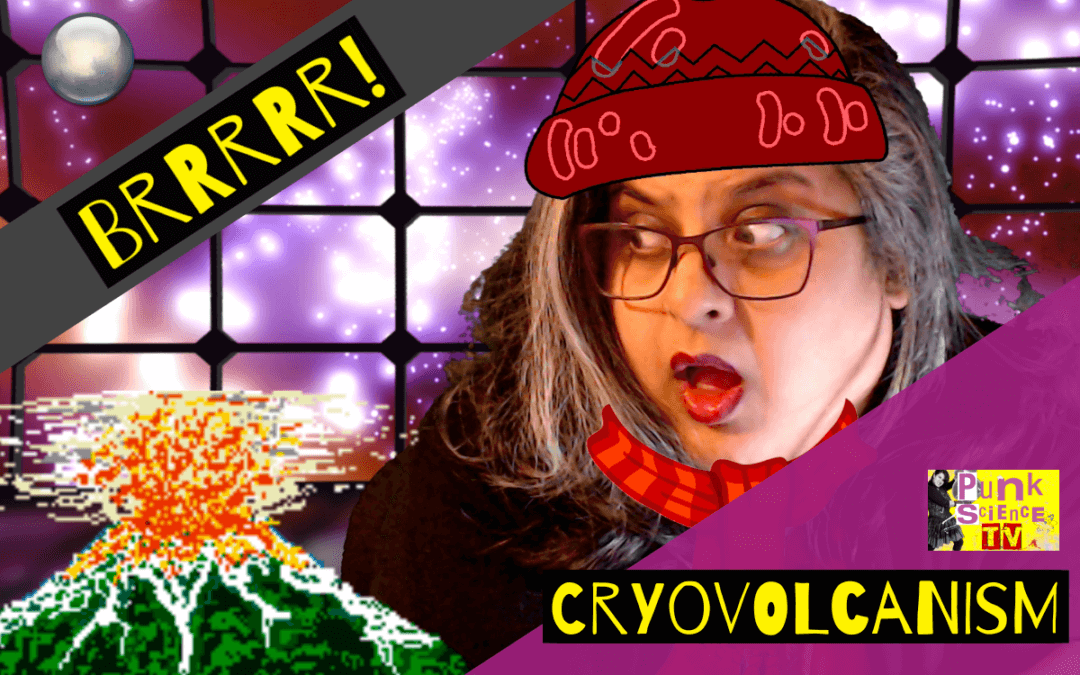
by Dr Manjir Samanta-Laughton | Dec 30, 2020 | Paradigm Revolution, Punk Science, Science
Volcanoes are supposed to be hot, so why are cold volcanoes found all over the solar system? In this article, we are going to be exploring Cryovolcanism.
Hot vs Cold
You are probably aware of volcanic activity on Earth – Volcanoes spew hot lava which is molten rock and various gases. It is believed that heat is part of the mechanism of why volcanoes occur. So why is it that ice-cold cryovolcanoes are being found in various part of the solar system? How can volcanoes be cold?
Not only does cryovolcanism exist but we are finding it throughout the solar system. The dwarf planet, Ceres was expected to be a boring, inactive lump of rock. But instead, we found cryovolcanoes on Ceres as well as on Titan, which is one of the moons of Saturn and also on Pluto.
Pluto is really far out from the sun and so we expect it to be extremely cold, frozen and inactive. So the volcanic activity on Pluto was a bit of a surprise.
Do we really understand volcanoes?
It may all come down to the fact that we have mistaken what volcanoes are in general. We think we know how volcanoes work on planet Earth. But if you look closely, you will see that people who study these things don’t really know exactly why volcanoes happen. This issue of Geographical magazine contains an article that admits that we don’t even know the basics of how volcanoes work.

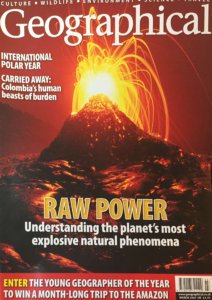
So it’s a bit of a misnomer to say that we know exactly why volcanoes happen on Earth, let alone cryovolcanoes in space.
Commonalities in eruptions
I think we should look beyond individual types of eruptions to a single mechanism that unites them all. What I’m saying is that eruptions and volcanoes are all expressions of the same principle: The Black Hole Principle.

The Black Hole Principle
If you remember, The Black Hole Principle says that light comes in from higher dimensions and then splits into matter and antimatter and these combine again to form light. So you have these intermittent eruptions of energy and particles.
We have also looked in previous episodes at how The Black Hole Principle creates water and even substances that we normally call ‘fossil fuels’ such as methane.
And that’s indeed what we see coming out of these Cryovolcanoes: methane, water, and ammonia.
In fact, we actually see water vapour coming out of volcanoes on Earth as well. In another previous episode, we looked at how stars actually emit water bullets.
Transcending the eruption
This is what I’m putting forward, that we have to transcend this concept of a volcanic eruption of ‘stuff’. The energy starts out in a different dimension and comes through and expresses itself at every single level of the universe.
So whether that be a hot planet or a cold planet, the energy is the same. The principle is the same. The Black Hole Principle is creating volcanoes at every level that we see them. Cryovolcanism is to be expected because all these planetary bodies are working in the same way just at different scales and temperatures.
Predictions and Conclusions
We not only expect to see more eruptions happening in our own solar system but even beyond our solar system because they are caused by a universal principle.
I hope that’s explained a bit more about cryovolcanism and volcanism in general, if you’d like to see more, please subscribe below and leave a comment to let me know what you think.

by Dr Manjir Samanta-Laughton | May 12, 2020 | Punk Science, Science
Wildfires create thunderstorms – are these mini black holes? If so, are they the cause of the fires? Because we know that thunderstorms are created by the same mechanism that creates black holes in the centres of galaxies, the possibility then exists that the lightning exuded by the clouds associated with wildfires could actually be the cause of wildfires and not just a consequence of them.
In this article, I ask the audacious question, do black holes create wildfires?
Wild devastation
In early 2020, the world was rocked by the devastating news that wildfires across Australia had caused massive destruction and the near extinction of some species. It isn’t just Australia which suffers such losses.
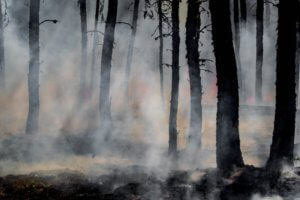
Unsplash
Other countries such as the USA also regularly experience wildfires. It is assumed that there is an initial spark probably caused by the sun or even human carelessness. Vegetation that has dried out provides ample fuel for wildfires to quickly go out of control.
Wildfire storms
There is a phenomenon associated with wildfires that caught my attention: the storms that appear alongside wildfires that can sometimes produce lightning thus spreading the fire even further.
So what is happening here? Conventional science, of course, doesn’t fully understand how lightning is generated as discussed here so wildfire storms are even more poorly understood. In case you are thinking that they are caused by friction and static build-up in clouds, think again as this theory has long been disproved by scientific data.
Dangerous clouds
What we can observe associated with wildfires is that a type of cloud called a Pyrocumulonimbus. It was originally thought that these clouds were rare but now scientists are realising that they are a fairly common occurrence with wildfires. These clouds produce lightning but do not always produce rain.
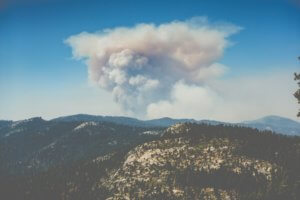
Unsplash
As you can imagine, the lightning from these clouds can ignite further fires and worsening the situation.
But knowing as I do, that thunderstorms show the same characteristics as larger black holes in space, I decided to investigate wildfire storms. What I found was very intriguing.
Intriguing characteristics
Although the pyrocumulonimbus clouds are associated with wildfires, they are very similar to those found around volcanoes. This, of course, is to be expected according to The Black Hole Principle theory, because each level of the universe is working according to the same pattern.
It has also been found that wildfire storms are able to shoot material high into the Earth’s atmosphere, to the point where they have been mistaken for volcanic eruptions.
Again this would fit with the bipolar jet activity that we see associated with black holes from galactic centres all the way down to quarks. These clouds have also been witnessed showing vortex behaviour – similar to a tornado.
Rarely, sometimes there will even be a fire tornado associated with bushfires.
I then found myself wondering, have we got things the wrong way round? Do black holes create wildfires?
The Black Hole Principle and Wildfires
We know that Black Hole Principle activity fluctuates; they are sometimes active, sometimes not. They appear in different areas at different times. This is what gives this and other planets their weather systems.
So maybe what is happening in some wildfires is that black holes themselves initiate in an area, these create lightning which ignites the dry vegetation causing the fire to spread. We see further mini black holes in the area which create the pyrocumulonimbus clouds, lightning strikes, ejection of material high into the atmosphere and sometimes rain.
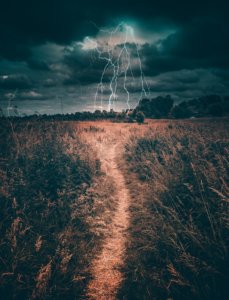
Unsplash
Sure, some wildfires are created for other reasons such as human negligence but effectively the ones created by lightning are being created by mini black holes!
By understanding The Black Hole Principle better, we may be able to manipulate the behaviour of black holes around forests and help to control the initiation of wildfires thus preventing the widespread destruction that they cause.
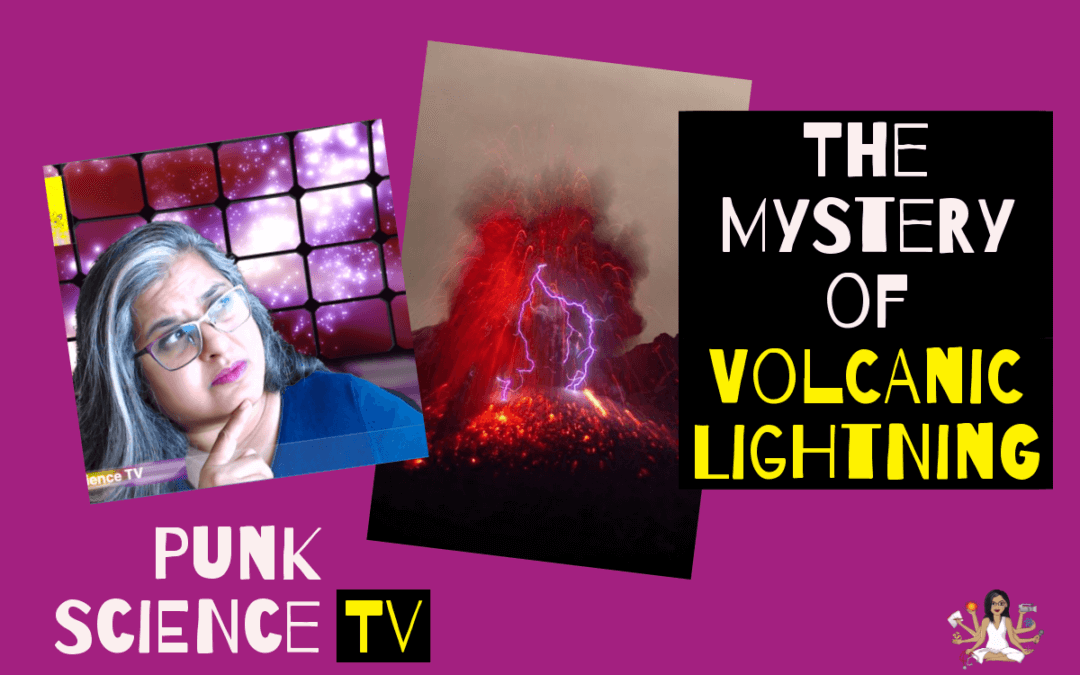
by Dr Manjir Samanta-Laughton | Jan 15, 2020 | Punk Science, Science
This time on Punk Science TV, we are discussing the mystery of Volcano Lightning and Black Holes.
The Mystery of Volcano Lightning and Black Holes
- What is volcano lightning?
- How can it help us to better understand volcanoes?
- What have black holes got to do with it?
Volcanic lightning remains a mystery. It is important to realise that comes from the volcano itself and happens during eruptions. We are not talking about a lightning strike from a storm that happens to hit a volcano whists it erupts.
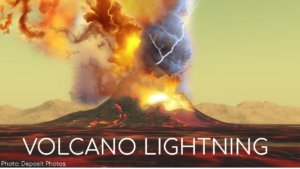
Volcano lightning and black holes
We now know that volcano lightning is fairly common and associated with charged particles. So we need to be looking for a mechanism that is fairly universal in that is happens in every volcanic eruption.
Volcanoes cause great human devastation – we don’t know exactly how and why they erupt which means we can’t predict them either.
Furthermore Volcanic lightning remains mysterious. There are many theories about ash rubbing together and static electricity but the measurements we have done so far just don’t add up in terms of creating the power we witness in volcanic lightning.
Volcanoes and The Black Hole Principle
However, in volcanic lightning, we have the hallmarks of the Black Hole Principle.
This includes the intermittent discharges of fast-moving electrons causing lightning.
As you may know by now, the fast-moving electrons are given off by the Black Hole Principle process as light moves from higher dimensions, beyond the speed of light, into our realms below the speed of light.
I have renamed the speed of the light, The Perception Horizon as it represents the limitations of what we normally perceive about the universe.
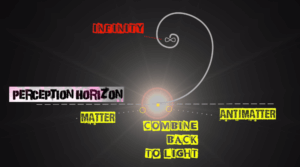
The Black Hole Principle
Also, there is the discharge of water from volcanoes which is also emitted by black holes.
The Centre of the Earth behaves in exactly the same way as a Black Hole in space only smaller!
Hence the lightning at a galactic level, in storms and in volcanoes.
In fact, one of the few scientific studies that have been done, show that volcanic lightning does indeed behave the same way as in thunderstorms but in miniature.
So that is how the mystery of volcano lightning is linked to black holes
Hope you enjoyed this update – please subscribe for more Punk Science TV.













